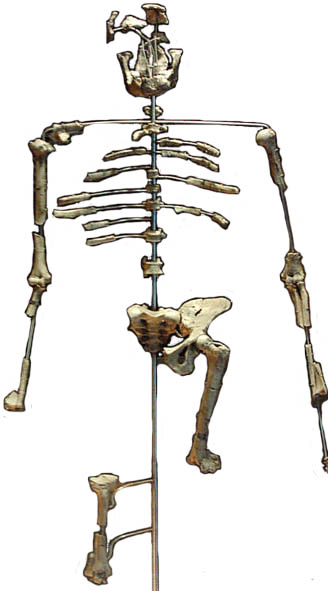
Lucy is the common name of AL 288-1 which includes several hundred pieces of bone fossils representing 40 percent of the skeleton of a female of the species Australopithecus afarensis. In Ethiopia, the assembly is also known as Dinkinesh, which means "you are marvelous" in the Amharic language. Lucy was discovered in 1974 in Africa, near the village Hadar in the Awash Valley of the Afar Triangle in Ethiopia, by paleoanthropologist Donald Johanson. The Lucy specimen is an early tree-dwelling australopithecine and is dated to about 3.2 million years ago. The skeleton presents a small skull akin to that of non-hominin apes, plus evidence of a walking-gait that was bipedal and upright, akin to that of humans; this combination supports the view of human evolution that bipedalism preceded increase in brain size.
For more information, click here. Or, Try these sources:
- Johanson, Donald C.; Wong, Kate (2010). Lucy's Legacy: The Quest for Human Origins. Crown Publishing Group. pp. 8–9. ISBN 978-0307396402.
- "Institute of Human Origins: Lucy's Story". Can be read here.
- Klein, Joanna (November 30, 2016). "Study Suggests 3.2 Million-Year-Old Lucy Spent a Lot of Time in Trees". New York Times. Can be read here.